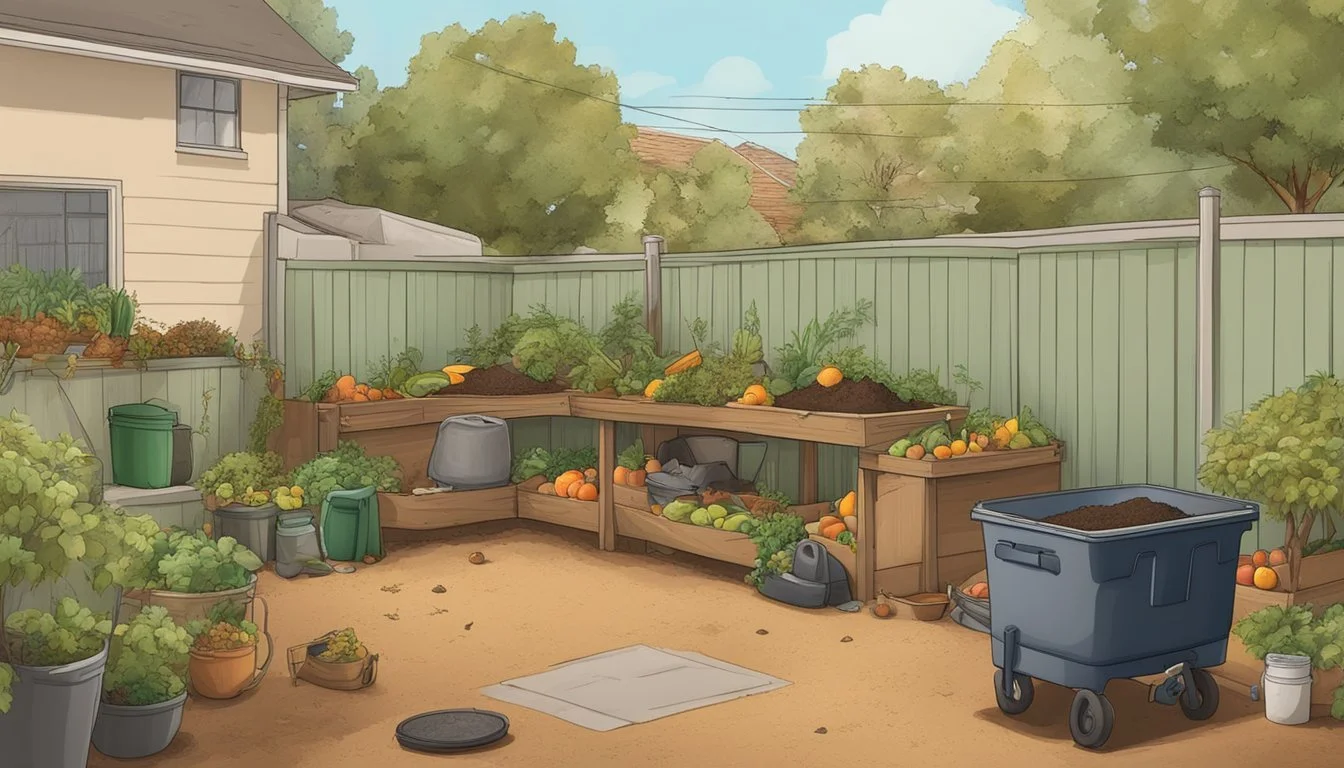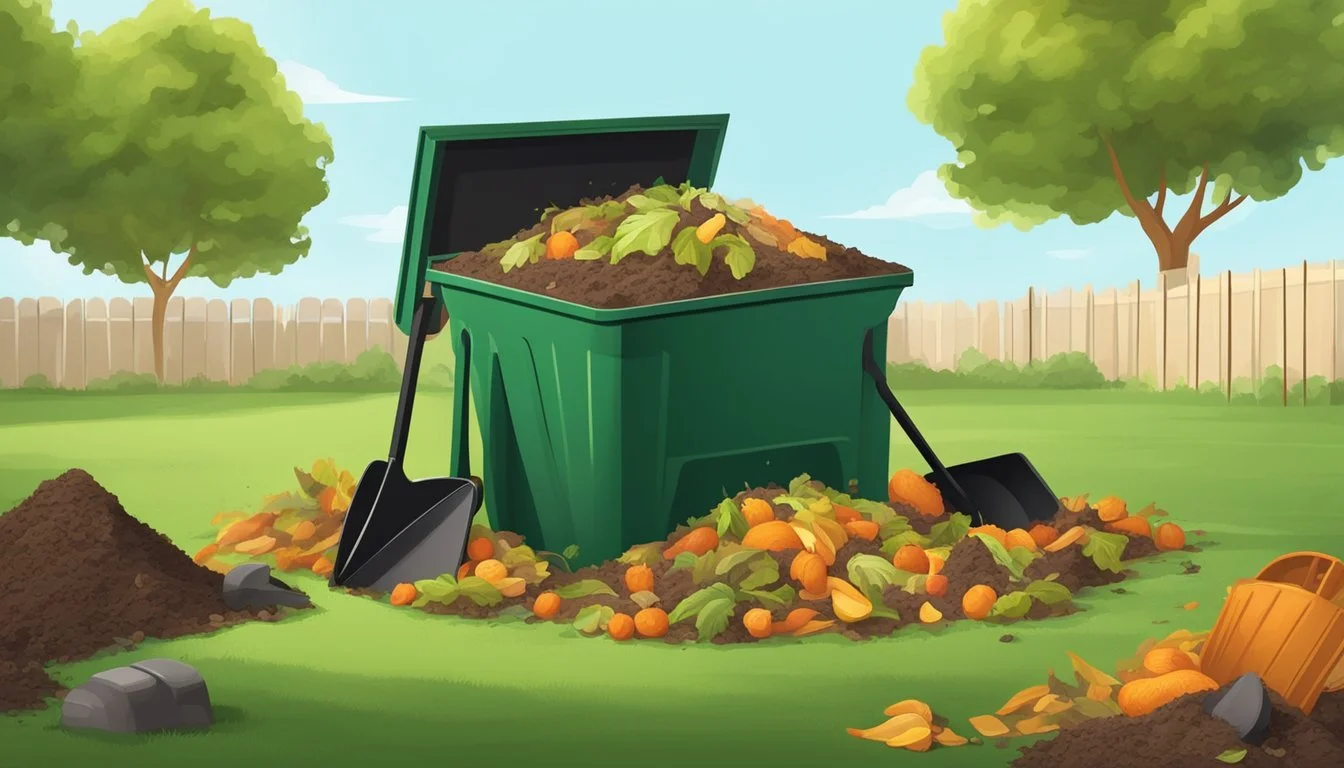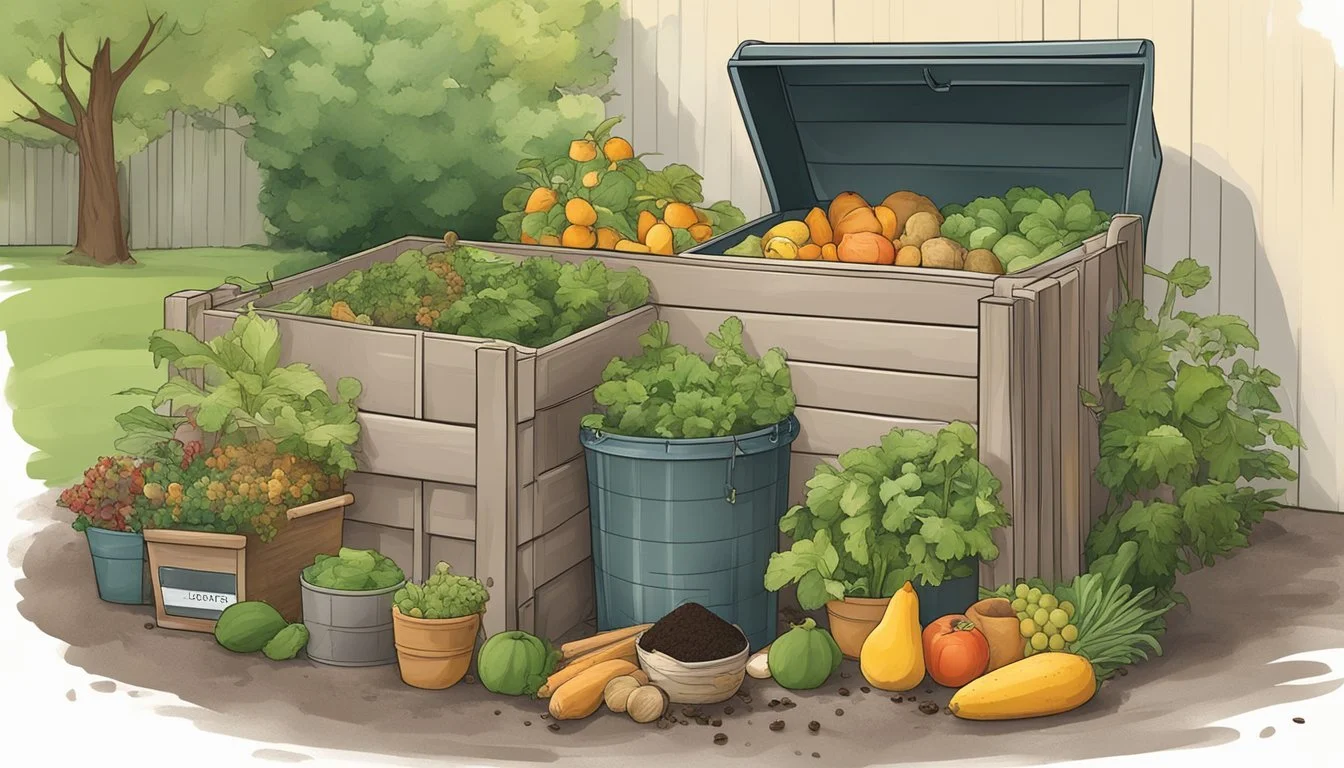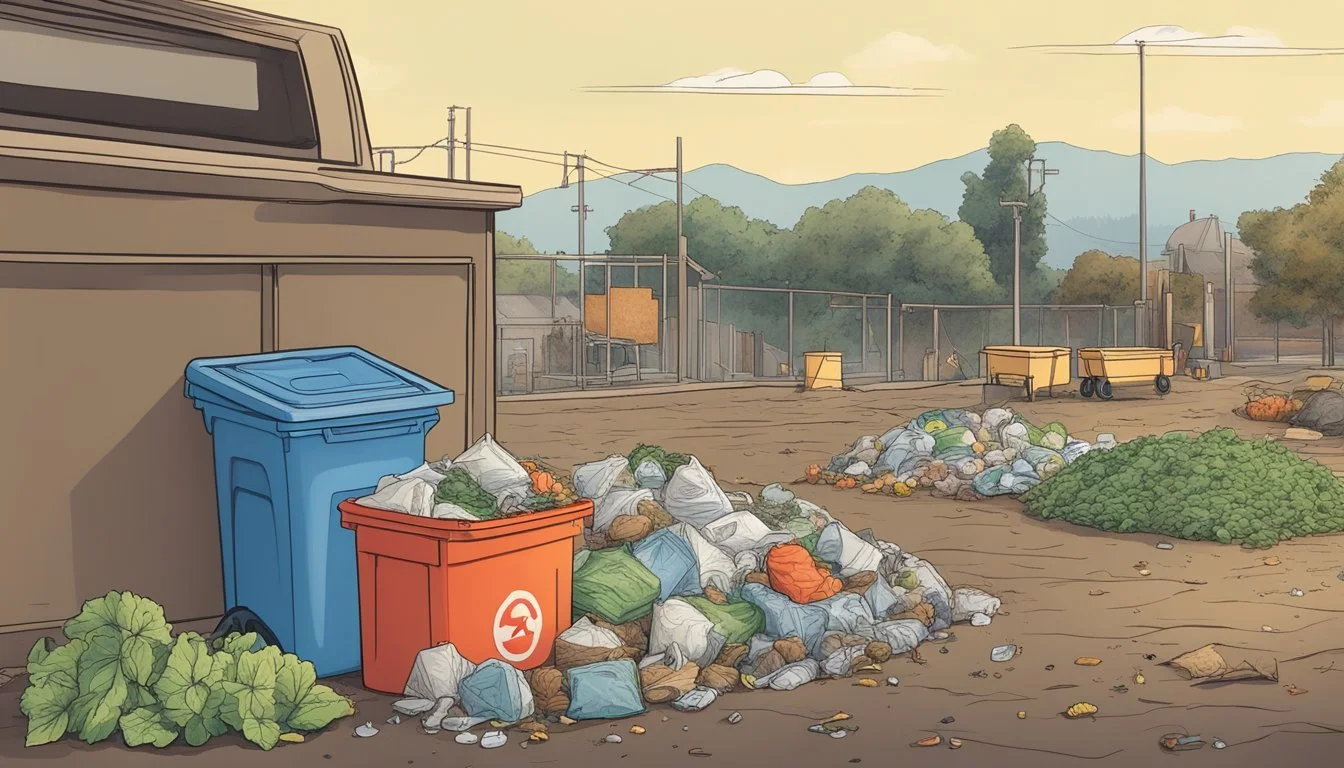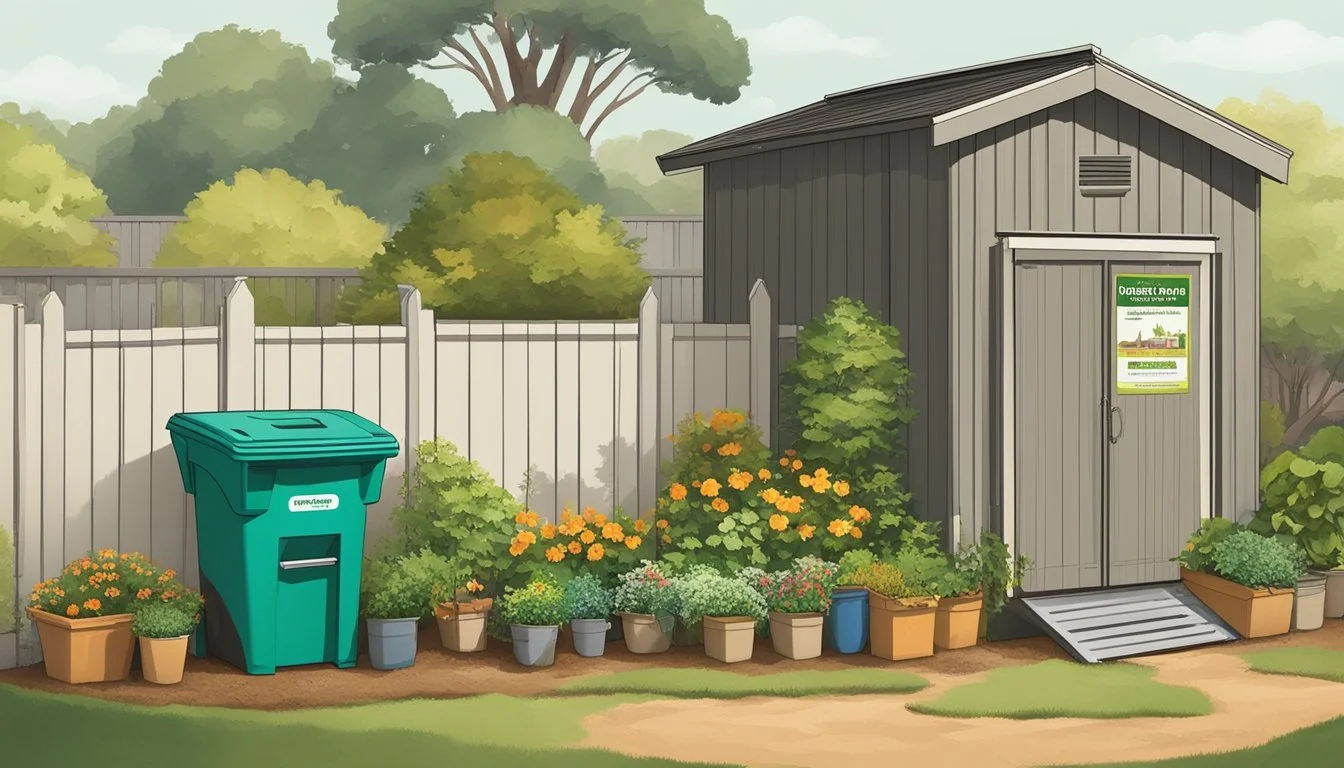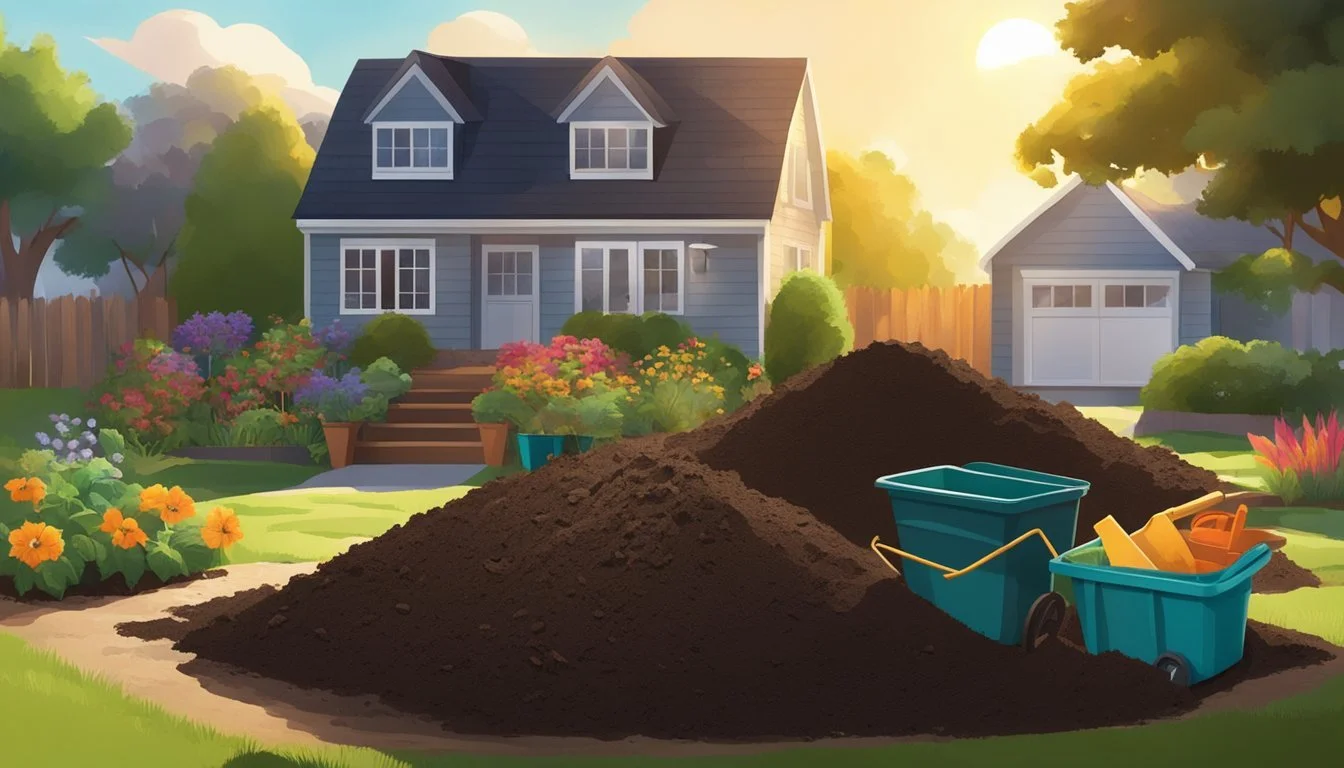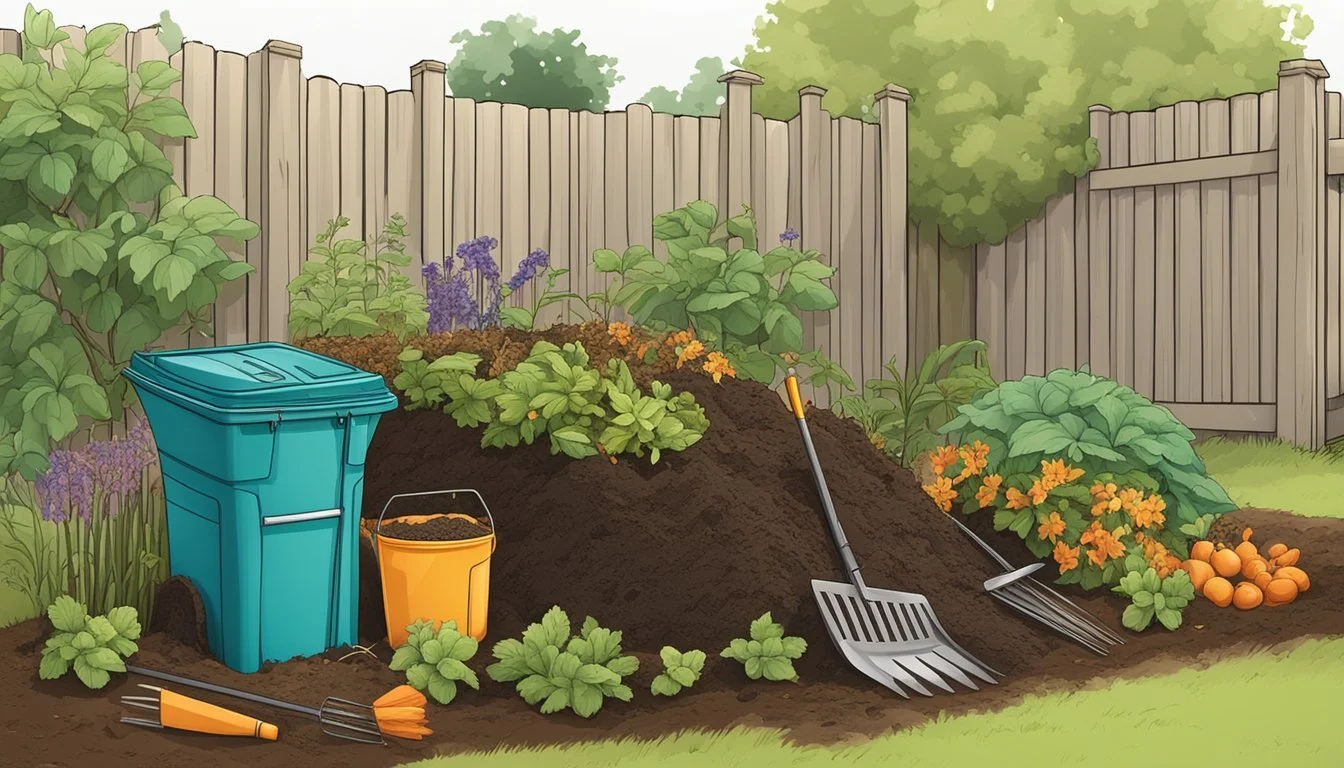Guide to Composting in Vallejo, CA
Essential Tips for Sustainable Waste Management
Composting is a natural process that turns organic waste materials into a rich soil amendment known as compost. In Vallejo, California, composting has become an increasingly popular method to reduce waste and support sustainable gardening practices. Residents and farmers alike can benefit from composting by converting kitchen scraps, yard trimmings, and other biodegradable materials into a valuable resource for enhancing soil health and fertility.
The City of Vallejo supports local composting efforts through a variety of initiatives and services. Partnering with organizations like VALCORE (Vallejo Community Organizations Recycling) and Recology Vallejo, the city provides residents with the tools and knowledge needed to start and maintain successful composting systems. These include compost bins, sorting guides, and educational resources on what can be composted and how to manage a composting bin effectively.
Understanding the correct materials for composting and the benefits it provides for the environment are vital for those interested in this practice. Composting not only enriches the soil, reducing the need for chemical fertilizers, but also helps to lower a household's carbon footprint by diverting organic waste from landfills where it would release methane, a potent greenhouse gas. With mandatory composting regulations in California under SB 1383, Vallejo's commitment to composting is not just a choice for sustainability, but also a compliance with state law, making it a crucial aspect of daily waste management.
Understanding Composting
Composting is an essential soil enhancement technique, leveraging natural processes to return nutrients to the soil and reduce waste. This section delves into the ecological benefits and fundamental principles behind composing in Vallejo.
Benefits of Composting
Composting significantly improves soil quality by adding nutrients and organic matter necessary for plant growth. It involves the breakdown of organic materials, providing a nutrient-rich additive for gardens and landscapes. By doing so, it supports the proliferation of beneficial soil organisms such as bacteria and fungi, which are crucial for a healthy ecosystem. Moreover, composting helps the environment by reducing the need for chemical fertilizers and decreasing methane emissions from landfills.
In Vallejo, composting efforts contribute to California's mandate to decrease organic waste—outlined in Recology Vallejo's explanation of the mandatory composting bill - SB 1383, leading to a healthier, more sustainable environment.
Composting Principles
The core principles of composting revolve around managing organic materials in a way that stimulates decomposition while controlling variables to optimize the process. It requires balancing green materials, which provide nitrogen, and brown materials, offering carbon. Water and air are the other two essential elements to maintain the composting process successfully.
Green Materials (Nitrogen-rich): includes items such as vegetable scraps and coffee grounds.
Brown Materials (Carbon-rich): involves materials like dry leaves and branches.
VALCORE Recycling highlights a successful approach by mixing equal weights of green and brown materials to create compost crops, guiding residents on the right ratios for efficient composting. Careful management of these elements ensures that the resulting compost is rich in nutrients and beneficial to the Vallejo community's soil.
Composting Methods in Vallejo
In Vallejo, residents have various composting methods at their disposal to manage organic waste effectively, from traditional backyard setups to innovative vermicomposting, and city-supported community composting programs.
Backyard Composting
Backyard composting is a popular method for Vallejo residents to recycle their green waste. Homeowners can utilize composting bins to convert yard trimmings and food scraps into rich soil amendments. The process is simple:
Select a Composting Bin: Choose from store-bought or homemade options.
Layer Your Scraps: Alternate between greens (food scraps, coffee grounds) and browns (dry leaves, cardboard).
Vermicomposting
Vermicomposting introduces earthworms into the composting equation. The worms speed up the decomposition process, making it a suitable option for those with limited space. Here are the basics:
Set Up a Worm Bin: Obtain or build a bin designed for vermicomposting.
Maintain Proper Conditions: Ensure a moist, but not sodden, environment with a pH that is neither too acidic nor too alkaline.
Community Composting
Community composting in Vallejo leverages shared spaces, like community gardens, allowing residents to contribute to and benefit from a larger composting system. These programs often provide:
Drop-off Locations: For residents to contribute organic waste.
Education: Guiding participants on what can be composted.
Vallejo residents are encouraged to get involved in local composting efforts to enrich their gardens and reduce landfill waste.
What Can Be Composted?
Composting in Vallejo, California, transforms a range of organic materials into valuable soil amendment. The key to successful composting is balancing green, nitrogen-rich materials with brown, carbon-rich materials.
Green Materials
Green materials are a crucial component of the compost pile, providing necessary nitrogen. Common green materials include:
Fruit scraps: Apple cores, banana peels, and other fruit remnants.
Vegetables: Spoiled or raw vegetable pieces can be composted.
Coffee grounds and tea leaves: These add nitrogen and improve compost texture.
Grass clippings: Fresh cuttings bring nitrogen and moisture.
Brown Materials
Brown materials contribute carbon to the compost mix. These include:
Leaves: Dried leaves are an excellent source of carbon.
Sawdust: It must be from untreated wood to avoid chemicals.
Cardboard pieces, including coffee filters: Shredded, they help to aerate the pile.
Weeds: They should be seed-free to prevent spreading in gardens.
When composting, it's crucial to ensure that no diseased plants, meats, oils, or dairy products are added, as these can attract pests and cause odors. Composting in Vallejo follows these basic principles to create a nutrient-rich material that supports local sustainability efforts.
What Should Not Be Composted
When building a healthy compost pile in Vallejo, certain materials should be left out to avoid attracting pests, creating odors, or introducing harmful pathogens into the mix. Here's an essential guide to what should not be composted:
Meat and Dairy Products: Including items such as beef, pork, poultry, cheese, and yogurt should be excluded. They decompose slowly and tend to attract unwanted pests and rodents.
Fats and Oils: Cooking oil, grease, and fat can create a smelly compost pile and are difficult to break down. These substances also attract animals.
Bones and Shellfish: Animal bones and seafood shells are very slow to decompose and can leave lingering odors that attract scavengers.
Inorganic Materials:
Metals, Glass, and Plastic: These materials are not biodegradable and have no place in a compost pile. They can also be hazardous as broken pieces may cause injury.
Film: Plastic films or wrappers should not be composted as they do not break down and can contaminate the soil.
Non-Compostable 'Recyclables': Although they're often labeled as recyclable, items such as plastic-coated paper and certain packaging materials aren't suitable for composting.
It is essential to be mindful of these non-compostable items to maintain a healthy compost system in Vallejo. For a comprehensive list of composting do's and don'ts, Vallejo residents can refer to resources provided by Recology Vallejo and VALCORE Recycling. These organizations help ensure that the composting process is effective and environmentally friendly.
Setting Up Your Composting Bin
When beginning the composting process, selecting the appropriate compost bin is a critical first step. Vallejo residents can choose from a variety of containers depending on their specific needs. It's best to start with a sturdy container that can be easily managed.
Size is an important factor to consider based on available space and the amount of organic waste typically produced. A bin that is too large might be hard to turn, while one too small may not provide sufficient space for waste. Ideally, a compost bin should be about 3 feet wide and 3 feet tall.
Location plays a crucial role in the composting process. The chosen site should be well-drained and partially shaded to avoid excessive moisture or drying out. Proximity to the source of compostable material — like a kitchen or garden — makes adding materials more convenient.
Here is a simple checklist for setting up a composting bin:
Select a bin or container suitable for your waste and space.
Place the bin in a well-drained, partially shaded location.
Ensure the bin allows for adequate airflow to aid decomposition.
Add alternating layers of green (nitrogen-rich) and brown (carbon-rich) materials.
Maintain moisture by watering as needed, but avoid overwatering.
Periodically turn the compost to introduce oxygen and expedite the process.
Remember, effective composting requires a balance of air and moisture, which a well-maintained bin will facilitate. For those in Vallejo, resources and guidelines on composting can be found through the Vallejo Community Organizations Recycling (VALCORE) or Recology Vallejo, which can assist with tips and troubleshooting for your composting endeavors.
Maintaining Your Compost
Keeping your compost healthy involves regular aeration, careful moisture and temperature control, and the correct addition of materials. These practices ensure efficient decomposition and prevent common issues such as odors or pests.
Aeration
Compost needs oxygen for aerobic bacteria to thrive and decompose organic matter efficiently. Aeration can be achieved by turning the compost pile to introduce air. One can use tools like a compost aerator or a simple garden fork to mix the compost effectively. It's ideal to aerate the compost every 1-2 weeks to maintain sufficient oxygen levels.
Moisture and Temperature Control
The compost pile should remain damp but not soaking wet, akin to a wrung-out sponge. Moisture is crucial for microbial activity, but too much can lead to anaerobic conditions and odor problems. Conversely, if the compost is too dry, decomposition slows down. Monitoring the temperature is equally important; a hot compost pile indicates active decomposition. If the pile is too cool, it may need more green materials such as tea bags or leaves.
Adding Materials Properly
When adding materials to the compost, one should strive for a balance between green (nitrogen-rich) and brown (carbon-rich) items. Greens include kitchen scraps and grass clippings, while browns encompass leaves, paper, and straw. A ratio of 3 parts brown to 1 part green is often recommended. Layering these materials helps with the decomposition process over time and prevents matting, which can smother the pile. Regularly add new materials and mix them into the existing compost to avoid clumping.
Troubleshooting Common Composting Issues
Effective composting requires managing both odors and pests to maintain a healthy and functional compost system. This guide provides solutions to common problems encountered in Vallejo's varied climate.
Odor Control
Odors in a compost pile are often indicative of an imbalance in the compost's nitrogen-rich 'greens' and carbon-rich 'browns'. To mitigate this:
Maintain Proper Balance: Ensure a balanced compost mixture, aiming for about 2-3 parts browns to 1 part greens.
Aerate Regularly: Turn the compost pile to introduce oxygen, which helps break down organic material more effectively and reduces smell.
If odors persist, add more browns like dried leaves, straw, or shredded paper to absorb excess moisture which is often the cause of unpleasant smells.
Pest Management
Pests can be attracted to compost piles for various reasons, but with diligent care, they can be managed:
Secure the Pile: Use a compost bin with a lid to deter rodents and other animals.
Proper Material Selection: Avoid composting meat, dairy, oils, and bones, as these are more likely to attract unwanted pests.
For insect control, a layer of soil or dry leaves on top of your compost can discourage flies and wasps from calling your compost home.
Using Finished Compost
Finished compost is a nutrient-rich addition to garden soil. One incorporates it into the soil to boost fertility and promote healthy plant growth. It contains decomposed organic matter that provides plants with essential nutrients.
Application to Soil: To apply finished compost, one should evenly spread a layer about 2-4 inches thick over the garden soil. Work it into the top 6 to 8 inches of soil before planting. This process enriches the soil and aids in water retention.
Proportions for Potting Mix: Finished compost can also be mixed with vermiculite and topsoil to create a balanced potting mix. A common recipe is:
1 part finished compost
1 part vermiculite
1 part topsoil
Nutrient Release: When mixed with soil, compost gradually releases nutrients which plants absorb over time. This slow release ensures a long-lasting supply of nitrogen, phosphorus, and potassium, among other beneficial elements.
Measure for Plant Health: Regularly amending soil with compost can improve its structure and enhance the health of plants by providing a stable supply of nutrients. It also helps the soil retain moisture, which is crucial for plant health.
Considerations:
Avoid applying it directly to plant stems or leaves as it may cause harm.
Monitor the nutrient balance in your soil to prevent over-fertilization.
Incorporating compost is a natural and effective way to foster plant growth and maintain a healthy garden ecosystem in Vallejo, CA.
Composting Regulations and Support in Vallejo
In Vallejo, CA, composting regulations are established to reduce landfill waste, while community support enhances participation in organic recycling. An array of resources provides residents with the guidance necessary to compost effectively.
Vallejo Composting Regulations
The state of California has implemented mandatory composting regulations to manage organic waste. Vallejo, following state policies, requires residents and businesses to separate their organic waste for composting, including food scraps and yard waste. California's mandatory composting bill, SB 1383, is essential in guiding Vallejo's efforts to reduce methane emissions from landfills.
Resources and Education
Vallejo provides resources to educate its residents on effective composting practices. VALCORE Recycling and Recology Vallejo supply comprehensive sorting guides that detail what is recyclable, compostable, and destined for landfill. Additionally, they offer guidelines on home composting methods and composting bins. The city encourages residents through composting classes to learn how to reduce their organic waste.
Community Support and Initiatives
Community organizations like VALCORE Recycling promote composting by selling Earth Machine compost bins at reduced rates for Vallejo residents. The non-profit works closely with the City of Vallejo to support and empower locals through education and community recycling programs. It also engages with schools and provides educational materials and support to instill the practice of composting within the community.
Environmental Impact and Sustainability
The practice of composting in Vallejo has a notable impact on the environment and furthers the goals of sustainability. Composting transforms organic waste into nutrient-rich soil, which can be used to promote healthier gardens and agricultural spaces. This process not only reduces the volume of waste going to landfills but also lessens greenhouse gas emissions, as organic matter in landfills decomposes anaerobically, releasing methane, a potent greenhouse gas.
Reduction in Landfill Waste: Composting diverts organic materials away from overcrowded landfills, prolonging their operational lifespan.
Soil Health and Productivity: Composted material returns valuable nutrients to the soil, reducing the need for chemical fertilizers and enhancing soil structure.
Water Conservation: Compost helps soil retain moisture, thus conserving water.
Energy Savings: By diminishing the need to transport waste to landfills, composting saves energy and reduces carbon emissions.
Environmental Protection:
Ecosystem Balance: Compost supports biodiversity in the soil, promoting a balanced ecosystem.
Pollution Mitigation: Properly managed composting can decrease soil and water pollution by controlling erosion and runoff.
The EPA encourages composting as a means to recycle organic materials while contributing to the health of the planet. Vallejo organizations support composting education and provide resources to facilitate correct sorting of recyclables and compostables. The city's proactive approach showcases the commitment to an environmentally responsible waste management system.
Advanced Topics in Composting
When delving into advanced composting practices, one should pay attention to the precise balance of nitrogen and carbon components, as well as the methods employed to manage composting at a bigger scale. These areas require a deeper understanding of compost science and infrastructure.
Balancing Nitrogen and Carbon
Nitrogen and carbon are essential elements in the composting process, each serving a unique role. Nitrogen, found in green waste like food scraps, provides the proteins and amino acids necessary for microbial growth, while carbon serves as an energy source and is found in brown waste such as shredded paper and dry leaves. The optimal ratio for a compost pile is approximately 30 parts carbon to 1 part nitrogen by weight. Ensuring this balance helps to create an environment conducive to decomposition while minimizing odor and deterring pests.
Example of a Balanced Compost Mixture:
Greens (Nitrogen-rich material): Food scraps, grass clippings
Browns (Carbon-rich material): Shredded paper, dry leaves, wood chips
Composting at Scale
Composting at scale involves the management of compost piles that can span several cubic yards, suitable for communities or commercial operations. In the city of Vallejo, facilities utilize large-scale composting techniques that involve careful monitoring of oxygen levels, temperature, and moisture to ensure efficient decomposition on a mass scale. Operators often turn the compost to introduce oxygen, which is vital for aerobic bacteria to flourish. They may also employ machinery to facilitate the process, thus managing considerable volumes of organic waste effectively.
Key Considerations for Large-Scale Composting:
Aeration: Oxygen is necessary to avoid anaerobic conditions that produce foul odors.
Temperature Monitoring: Compost should reach a temperature between 131°F and 170°F to effectively break down organic material and kill pathogens.
Moisture Control: Compost should remain as damp as a wrung-out sponge to support microbial activity without creating waterlogged conditions.

